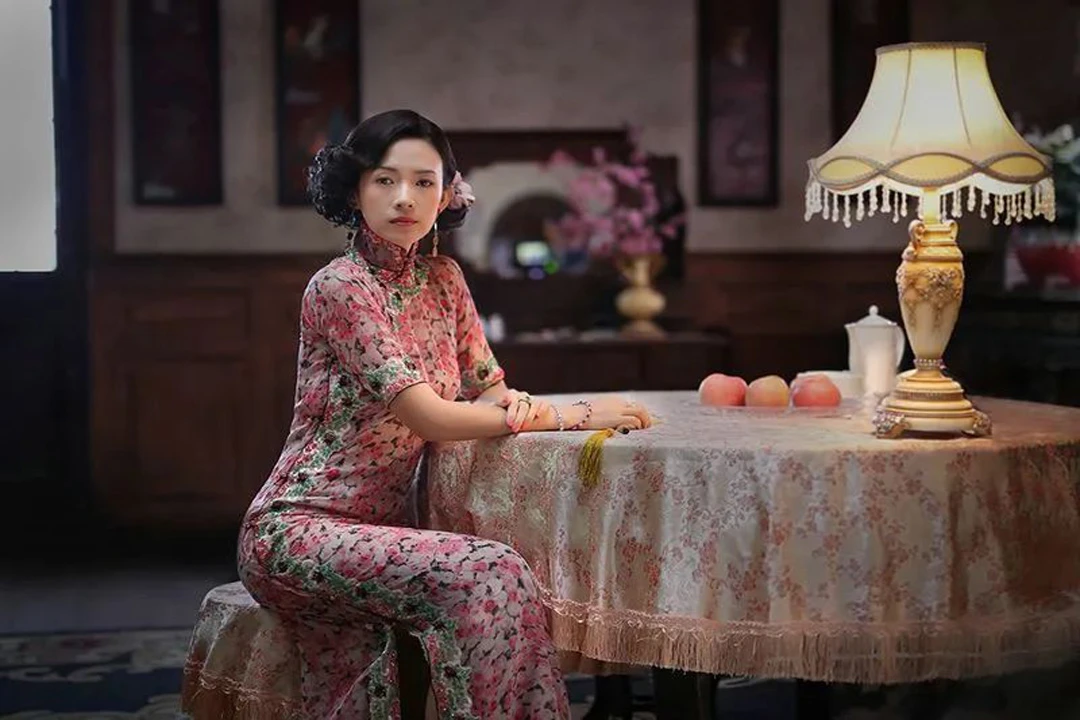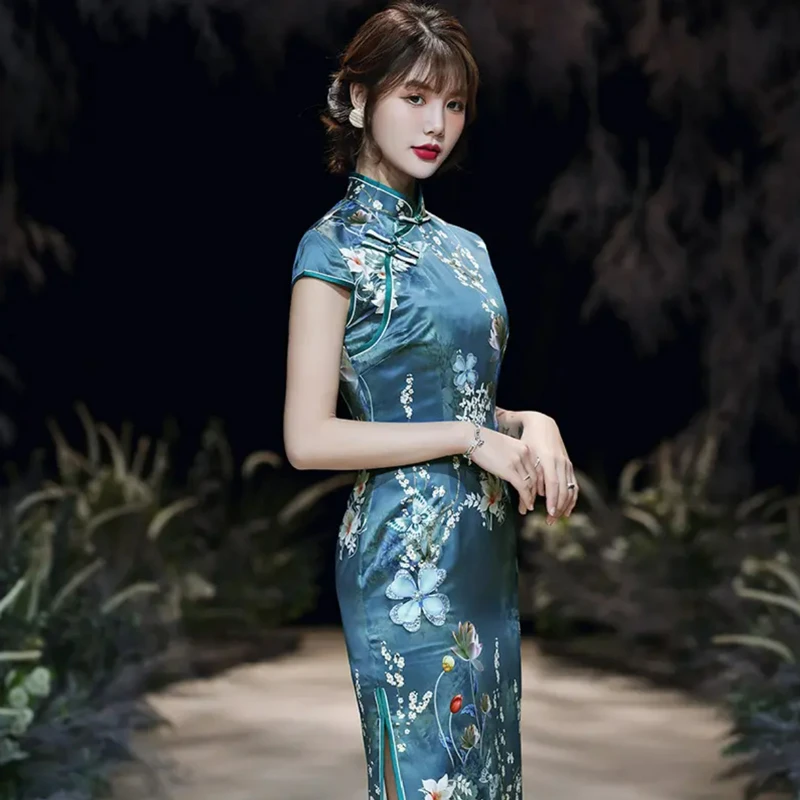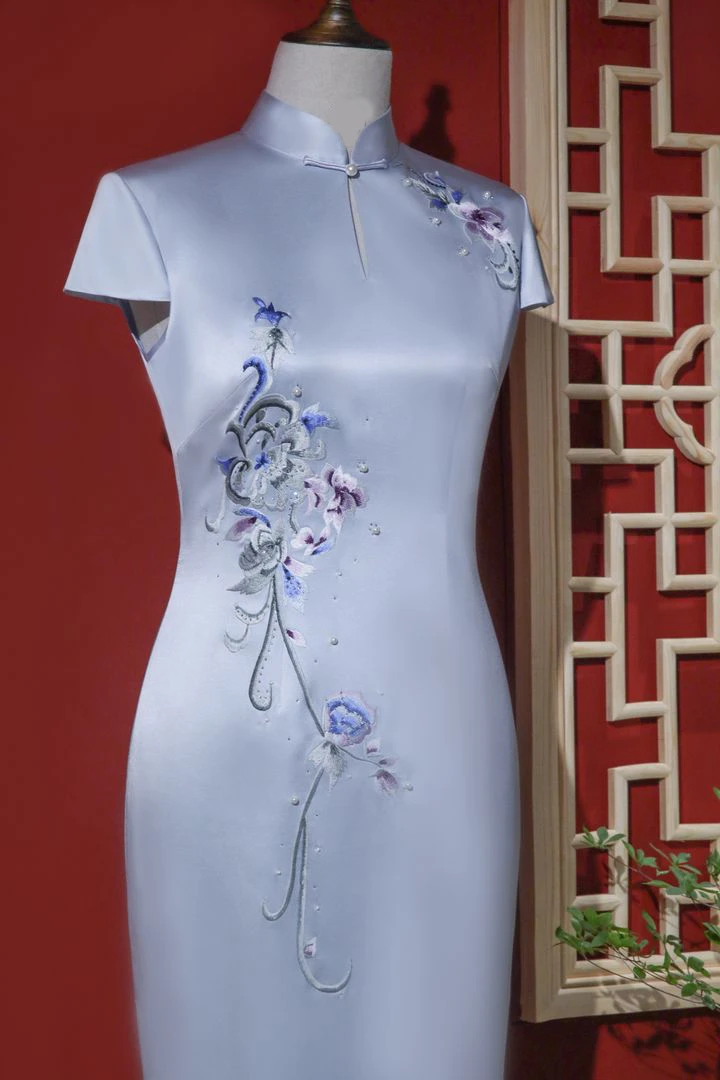The qipao dress, a traditional Chinese garment, has captivated the world with its charm and elegance, embodying a harmonious blend of Eastern and Western elements. Its design focuses on the seamless integration of various components, a crucial aspect in the realm of fashion design. In 20th-century Shanghai, the qipao became the preferred choice of attire for women during the Republican era, symbolizing the development and transformation of an entire epoch.
During the Republican period, women began to pay closer attention to their clothing as their minds were liberated from traditional constraints. The qipao, with its ability to accentuate the female form, garnered significant attention and gained official promotion as a distinctively Chinese modern women’s dress. The classic elements of the qipao, such as the standing collar and knotted buttons, underwent innovation and transformation. The allure of the qipao culture captivated Western fashion designers, and films featuring the qipao gradually emerged, all closely tied to China’s unique qipao culture.
The qipao itself embodies a noble and elegant essence while also possessing a mysterious and subtle charm. On the international stage, the qipao became the ultimate means for Chinese women to showcase their grace and beauty. From 1920 to 1949, the qipao was the most common attire for women, with its presence visible in every corner of the streets. During this period, the qipao began to incorporate Western tailoring styles, resulting in a more form-fitting design and a faster pace of fashion evolution.
The design elements of the qipao during the Republican era were influenced by several factors:
1. The special social environment
The Republican period was a unique stage in history, with social and political changes creating a relatively open social atmosphere, leading to significant changes in fashion. The transformation of clothing was closely linked to political and economic developments, with a thriving economy encouraging people to pursue more diverse fashion styles.
2. Geographical advantages
After the revolution, the political center began to shift southward, and Shanghai emerged as a representative prosperous metropolis. Its geographical advantages provided favorable climatic conditions, Shanghai gradually became one of the five major ports, leveraging its strengths to develop foreign trade.
3. Evolving aesthetic perceptions
The interweaving of different ethnic cultures led to the acceptance of ever-changing concepts, and under the combined influence of various cultures, fashion aesthetics underwent a transformation. The East and the West had different historical and cultural backgrounds, resulting in differences in clothing styles and aesthetic tastes.
4. Women’s independent consciousness
After the revolution, the feudal autocratic rule was abolished, and traditional feudal etiquette was removed, allowing women to be liberated and enhancing their self-awareness. During this special historical period, women placed more emphasis on achieving equality with men in their attire.
5. The integration of Western culture
In 1930s Europe, women’s fashion featured lower hemlines and higher waistlines, with long skirts becoming popular. This trend gradually made its way to Shanghai, and as a gathering place for socialites, many women were influenced by this fashion and began to focus on the tight-fitting and high-slit styles of the qipao, emphasizing the display of their figures.
The qipao’s evolution during the Republican era was a testament to the changing times and the growing influence of Western culture on Chinese fashion. As Shanghai became a melting pot of Eastern and Western influences, the qipao underwent a transformation that reflected the city’s cosmopolitan spirit.
The influx of foreign immigrants into Shanghai brought with it a wealth of new ideas and concepts, which were eagerly embraced by the city’s open-minded residents. This openness to new cultures and ideas played a significant role in shaping the qipao’s design and popularity among women.
The changing aesthetic perceptions of the time also contributed to the qipao’s evolution. While traditional Chinese aesthetics favored subtlety and elegance, Western aesthetics placed a greater emphasis on sensuality and boldness. The fusion of these two distinct aesthetic sensibilities created a unique and captivating style that was embodied by the qipao.
In ancient China, women’s clothing was designed to cover the body from head to toe, reflecting the traditional values and constraints placed on women. However, as women began to assert their independence and challenge these traditional norms, the qipao emerged as a symbol of their liberation. The modern qipao allowed women to reveal their arms and showcase their natural beauty, marking a significant shift in the perception of women’s bodies and their place in society.
The rise of the independent woman during the Republican era played a crucial role in the qipao’s popularity. As women began to participate in the workforce and assert their equality with men, they sought clothing that reflected their newfound sense of empowerment. The qipao, with its form-fitting silhouette and bold design, became the perfect choice for these progressive women.
The qipao’s evolution during the Republican era was not just a fashion statement; it was a reflection of the changing times and the growing empowerment of women. As Shanghai became a hub of cultural exchange and innovation, the qipao emerged as a symbol of the city’s modernity and progressiveness.
Today, the qipao remains an enduring symbol of Chinese fashion and culture. Its timeless elegance and unique blend of Eastern and Western elements continue to captivate people around the world. Whether worn as a formal dress or a stylish everyday outfit, the qipao embodies the grace, beauty, and resilience of Chinese women throughout history.
During the Republican period, there were many elements in the design of qipao costumes, including social influence, cultural shock, and other aspects. In order to better showcase the contemporary cultural atmosphere, women also appropriately enhance their charm when engaging in ideological struggles. They hope to combine the rich traditional cultural atmosphere of qipao with their own cultivation, and jointly cater to the social trend of the time, shaping beautiful character images.
As we look back on the qipao’s evolution during the Republican era, we are reminded of the power of fashion to reflect and shape social change. The qipao’s transformation from a traditional garment to a symbol of women’s empowerment and cultural fusion is a testament to the enduring spirit of innovation and adaptability that has always been at the heart of Chinese culture.



